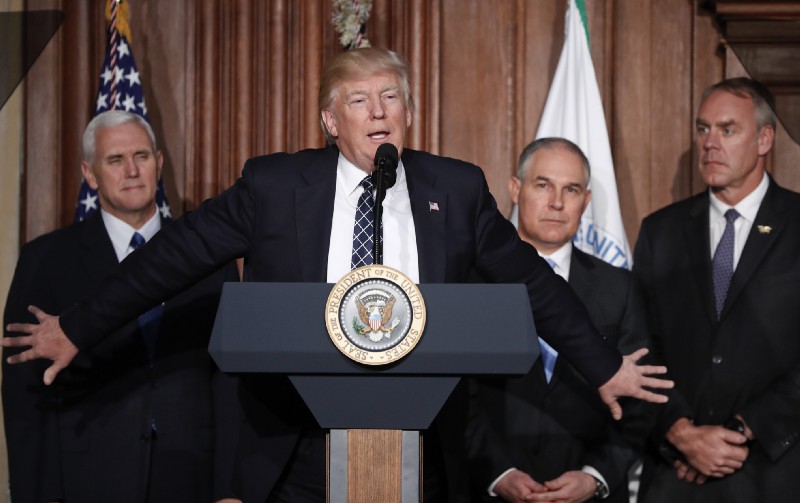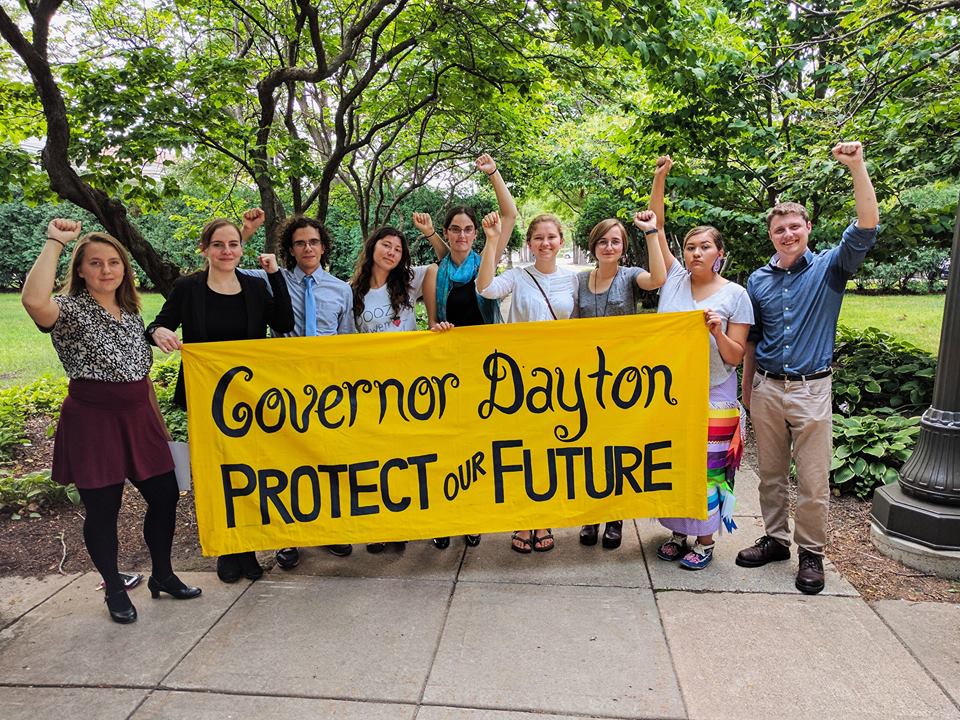In 2012, as Pennsylvania was in the midst of a natural gas boom ushered in by hydraulic fracturing, the state legislature passed a law known as Act 13. Presented under the auspice of updating the state’s regulations, the law was decidedly pro-industry, giving oil and gas companies the ability to drill in any kind of zoning code and allowing companies to hide what chemicals they use in their operations from public view.
Environmentalists and public health groups immediately challenged the law, vaulting it into the court system. But in making their case against the law, opponents had something in Pennsylvania that almost no other state in the country has: a provision, included in the state’s constitution, that protects residents’ inalienable right to a healthy environment.
For Maya van Rossum, who worked for the Delaware Riverkeepers, challenging Act 13 proved to be the perfect time to see how much power the constitutional provision held in court. After a lengthy legal battle, the case ended up in the state Supreme Court — where a panel of judges struck down a number of provisions in the law as unconstitutional.
That battle inspired van Rossum, giving her hope that similar constitutional provisions in other states could breathe life into an environmental movement that she felt was notching more losses than victories. Van Rossum spoke with ThinkProgress about her work to build a movement around “environmental constitutionalism,” which she describes in her book, The Green Amendment: Securing Our Right to A Healthy Environment.
What inspired this idea of a Green Amendment and the concept of a constitutional right to environmental well-being?
I’ve been doing environmental advocacy for 24 years now. Throughout that time, I have always worked through federal, state, and local legislation to advocate for environmental protection and, frankly, lost more battles than we won.
In 2012, the Pennsylvania legislature passed a piece of legislation called Act 13, which was a very pro-drilling and fracking piece of legislation that was going to take this industry that was already conquering communities across the Commonwealth and make it even easier for them to overwhelm our communities with their industrial operations. The argument that I at the Delaware Riverkeeper Network brought to the table was that Act 13 violated the constitutional provision in the Pennsylvania constitution that protected people’s rights to a healthy environment, called Article 1 Section 27.
We knew it was a heavy lift because for decades we and others had cited the language of Article 1 Section 27 in our environmental protection advocacy and in our litigation and were always very quickly told by the courts and decision makers that that was just a policy statement that had no force in effect of law.
When the decision came down that declared key sections of Act 13 as unconstitutional, we were just amazed because this was a very conservative Supreme Court, and the plurality opinion was written by a very conservative Chief Justice of that Supreme Court. That decision breathed life into this long-ignored constitutional provision.
So I looked at all of the constitutions… And what I found was that one of the reasons you don’t really hear about this is because, in the United States of America, for the most part, it doesn’t exist: the constitutional right to a healthy environment. We know there is nothing in the federal constitution. There are 35 states that mention the environment in their constitutions, but there are only two that give it the legal strength you have in Pennsylvania: Pennsylvania and Montana.
We’re now working on launching what I’m calling the Green Amendment Movement, getting constitutional-level protections for the inalienable right for a healthy environment in every constitution, in every state across the nation, and eventually at the federal level.
Why do you think the legislative route has been so difficult in terms of creating environmental progress and protections?
The whole concept of environmental protection, crafting legislation — whether you’re talking about local level, state level, or federal level — really has been corrupted by the political process and by lobbyists for industry who have much more access to decision makers than regular people do, and certainly people who live in environmental justice areas.
The Clean Air Act, the Clean Water Act, the National Environmental Policy Act — these are all laudable ideas, and did result in very important advancements in terms of environmental protection. But fundamentally, while there was good in reducing pollution and reducing damage, when you look at those laws, fundamentally, at the heart of those environmental protection laws is not the goal of prohibiting pollution but permitting it.
As time has gone on, what we can see is that all of that ongoing environmental degradation is happening because of these laws, because that is how they are written.
What does a Green Amendment Movement look like? Where does it start, and how does it grow?
It has to start at the state level. If we start having a conversation really enlightening folks, or disabusing folks of the notion that they actually have the right to clean water and clean air, and enlightening them to the fact that our environmental protection laws are written in such a way as to advance ongoing pollution and degradation rather than striving to truly to prevent it, then we open up people’s eyes.
We then start getting proposals being made by state legislators to protect the right to a healthy environment in the Bill of Rights section of the state’s constitution as an inalienable right. We start having people advocating for the passage of those rights, and having votes, and we start seeing constitutional provisions passing. Through that entire process, you have a growing awareness of the failures of our current environmental protection laws, the power of constitutional provisions, the state and status of environmental degradation in our nation, and you are giving higher profile to this entire concept. And naturally, what will grow out of this, is the realization that we really need a constitutional provision at the highest level in our nation, which is in the federal Constitution.
The most important thing that we need to build support for is the recognition that the language and the placement of the provision matters. There are 35 states that talk about the environment in their constitution, but they do not give the inalienable right to a healthy environment that we need. Many of them talk about fishing and hunting rights, they don’t talk about the rights to clean air, clean water, and a healthy environment.
What do you make of the constitutional challenge that is making its way through the courts right now, Juliana v. United States, where 21 youth plaintiffs are arguing that the government has denied them of their constitutional right to a livable climate?
There’s that movement that is happening, and then you also hear a lot of dialogue about the rights of nature and ordinances that give nature rights in courts. I think both of those initiatives are powerful and important. But what I’m talking about is really a different approach — it’s not trying to convince people to make an interpretation.
It really is going to be about people fighting to be very clear with their legislator, at the state level and the federal level, that they want and are entitled to and demand their right to a healthy environment. The clarity of the effort makes it a very powerful movement.
It’s going to give every individual the power to rise up and demand and defend of their environmental rights. They’re not going to need an attorney to advocate for the passage of a constitutional provision. They just need to get themselves organized. It’s using our existing legal framework to clearly secure the right to a healthy environment.
From the moment a constitutional provision is secured, it instantly changes the way decisions are made by state legislators… they have to go that extra mile and think about whether or not they have fulfilled their constitutional obligation. It means they need to look at cumulative impacts. It means they’re going to have to use science-based decision making. It means that the environmental justice communities now have a much stronger argument to advance the cause of environmental justice. Everybody has an equitable right to a healthy environment, and it’s an individual right.
Right now, if you advocate for protection of your environment, very often, you’re called a tree hugger and told you are robbing people of a job. And what that does is it intimidates people and forces them into silence. If you have a constitutional provision… You are now the person who is fighting for your constitutional right to a healthy environment. So it changes the frame of the advocacy, which really empowers and emboldens people to rise up and fight for what they know is right.
One concern about the long-term implications of the Trump administration is his ability to really reshape the federal court system through his appointments. How would this protect against that?
One of the things that is very important with a federal constitutional provision is you do now have a mechanism for holding President Trump accountable for a lot of the things that he is doing, in terms of rolling back federal environmental regulations. Right now, he is using a legal framework to carry out that activity. He doesn’t have a constitutional obligation that requires that next level of thought and science-based decision making.
In terms of justices and judges, by having a constitutional provision, you are bringing a whole new body of law to the courtroom. You may still have judges and justices that are more inclined to industry, but it’s going to be harder to justify those decisions because now they are going to have to look at it in a constitutional frame.
In Pennsylvania, the justices that rendered the decision that breathed life into Article 1 Section 27 were by no means the liberal greenies of any state. These were very conservative justices. They did not come to the table with a pro-environment bent. But yet, with this new constitutional framework and obligation, they were forced to look at the issue of Act 13 through a different lens. And that different lens gave us the ability to achieve this victory.
If you have anti-environment justices appointed to the court, that of course raises the bar and burden when it comes to securing good environmental protection outcomes. I would hazard to guess it would most certainly lead to bad decisions and bad decision making that we are going to have to deal with. But like the Civil Rights Movement, where you also had bad decisions early on that allowed the perpetuation of segregation, ultimately, the constitutional provisions did result in the vindication of many key civil rights.
Ultimately, when you have good constitutional provision, I think the truth wins out. When I say it’s a Green Amendment Movement, I really think it is a movement, because it is going to touch every part of our lives.
The interview has been edited and condensed for clarity.



